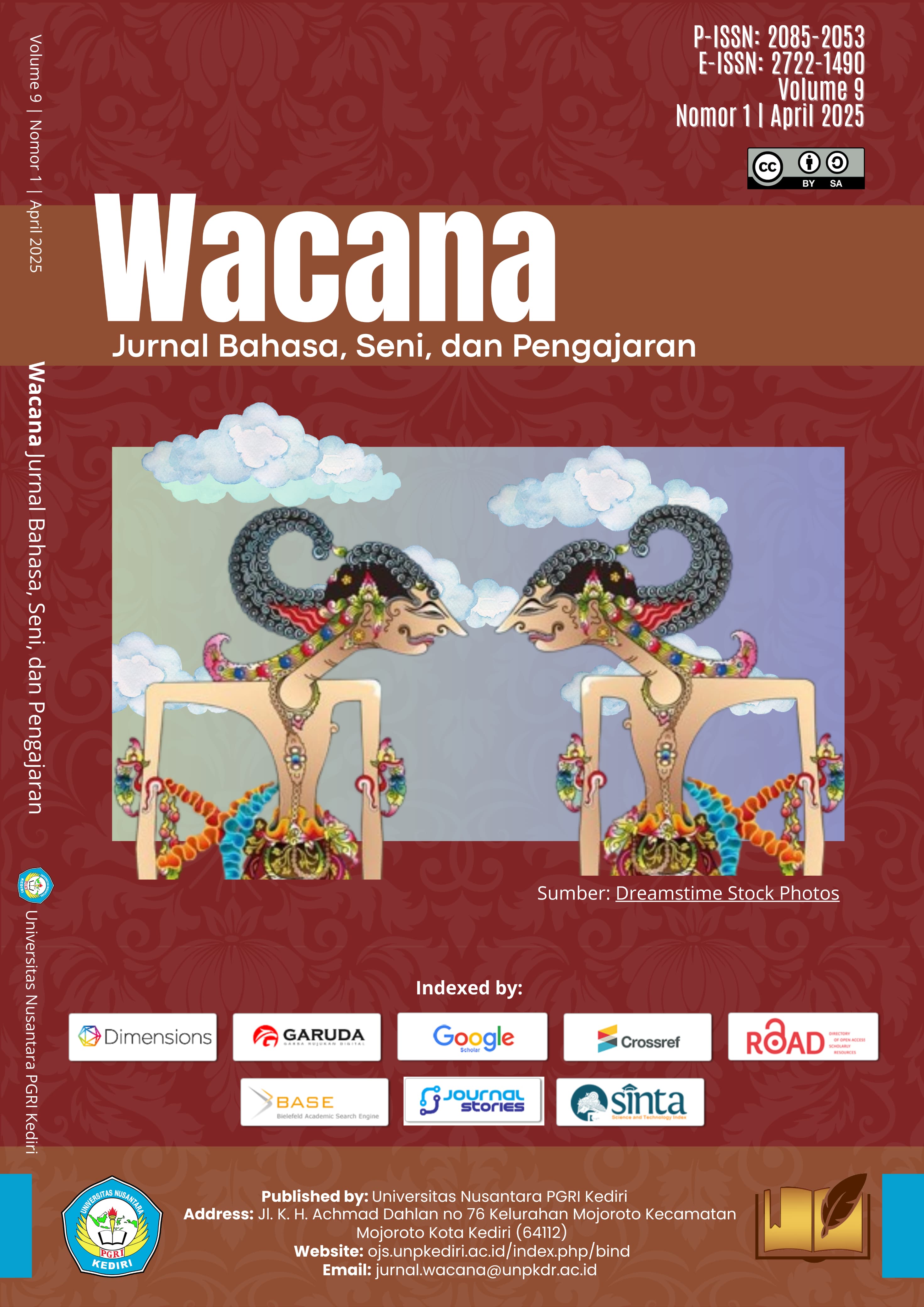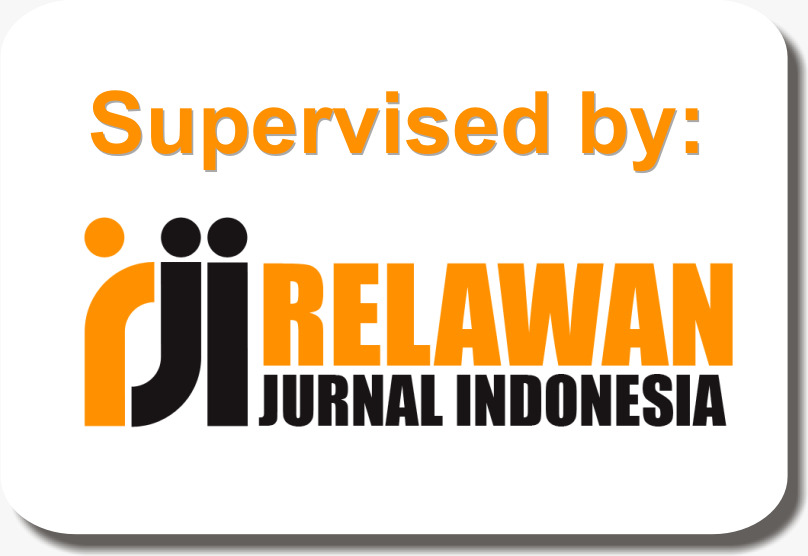The Representation of Mystical Elements in the Character of Teungku Don in the Novel Percikan Darah di Bunga by Arafat Nur: A Mimetic and Expressive Perspective
DOI:
https://doi.org/10.29407/jbsp.v9i1.4Keywords:
Aceh literature, expressive, mimetic, mysticism, spiritualityAbstract
This study examines mystical elements in Teungku Don’s character in Arafat Nur’s novel Percikan Darah di Bunga, exploring their interplay with Acehnese spirituality, social conflict, and cultural identity. Employing a descriptive qualitative design with mimetic and expressive approaches, primary data were drawn from the novel’s text and supplemented by relevant secondary sources. Data were collected through literature review and document analysis, then analyzed using Miles and Huberman’s three-stage model (data reduction, data presentation, and conclusion drawing). Findings reveal seven dimensions of mystical representation: (1) an innate spiritual aura; (2) dhikr practices enabling transcendental experiences and soul release; (3) perception of supernatural phenomena; (4) telepathic insight into others’ thoughts and feelings; (5) prophetic visions through dreams; (6) eccentric behavior as a social marker of mysticism; and (7) the limits of mystical power in shaping conflict outcomes. These dimensions not only reflect entrenched spiritual traditions within Acehnese society but also serve as a literary vehicle to probe themes of social tension, identity formation, and the search for meaning amid violence. The study contributes to literary and cultural scholarship by demonstrating how mystical motifs articulate and negotiate socio-cultural dynamics in Aceh.
References
Ahmadi, A. (2019). Metode penelitian sastra. Penerbit Graniti.
Arum, D. M. S. P., & Ratuliu, M. (2023). Menganalisis unsur ekstrinsik dan pendekatan ekspresif terhadap cerpen “Bersiap Kecewa Bersedih Tanpa Kata-Kata” karya Putu Wijaya. PUSTAKA: Jurnal Bahasa Dan Pendidikan, 3(1), 19–26.
Ayuni, Q. (2024). Eksistensi dan motif mistisisme dalam cerita rakyat mitos Gunung Kawi: Kajian mistisisme Niels Mulder. Wacana: Jurnal Bahasa, Seni, Dan Pengajaran, 8(1), 27–37.
Darmalaksana, W. (2020). Metode penelitian kualitatif studi pustaka dan studi lapangan. Pre-Print Digital Library UIN Sunan Gunung Djati Bandung.
Endraswara, S. (2013). Metodologi penelitian sastra. Media Pressindo.
Hermawan, D., Fazrin, E. N., & Darma, R. T. H. (2021). Ilmu tasawuf: Tuntunan hidup kitab Basah di zaman edan. Penerbit NEM.
Hidayatullah, I. F. (2023). Mitos pada novel Manusia Langit karya JA Sonjaya dengan pendekatan mimetik. Jurnal Penelitian, Pendidikan, Dan Pembelajaran, 18(35).
Jannah, R., & Firdaus, T. (2025). Sastra agama dalam hikayat perang Sabi: Sebuah ideologi masyarakat Aceh melawan penjajahan Belanda. Acintya: Jurnal Teologi, Filsafat Dan Studi Agama, 1(1), 54–74.
Jayanti, M. D. (2020). Pendekatan ekspresif dan objektif dalam novel “Mencari Perempuan yang Hilang.” Wacana: Jurnal Bahasa, Seni, Dan Pengajaran, 4(1), 79–88.
Kasmi, H. (2016). Mitos Aceh dalam novel Seuleusoh karya D Keumalawati. Visipena, 7(1), 1–8.
Mahendra, F. R. (2024). Sufisme: Sejarah spiritualisme dalam Islam & Perkembangan tarekat sufi dari masa ke masa. Anak Hebat Indonesia.
Miles, M. B., & Huberman, A. M. (2014). dan Saldana, J.(2014). Qualitative data analysis, a methods sourcebook.
Naufal, M. L. S., Anjani, R., & Trisnawati, T. (2022). Kritik sosiologis dalam puisi “Pada Suatu Hari Nanti” karya Sapardi Djoko Damono menggunakan pendekatan ekspresif. Education: Jurnal Sosial Humaniora Dan Pendidikan, 2(2), 24–29.
Nurhalimah, S., Lestari, R. D., & Mustika, I. (2020). Analisis puisi Chairil Anwar "Derai-Derai Cemara" dengan pendekatan mimetik. Parole: Jurnal Pendidikan Bahasa Dan Sastra Indonesia, 3(5).
Pratama, D. A., Sari, D. A. P., Safitri, E. W., Khoirunissa, F. N., & Sa’adah, M. A. (2024). Analisis pendekatan mimetik dalam menggali makna puisi “Merayakan Kehilangan” karya Ulfiyanti Nawangsih Rahayu. Sintaksis: Publikasi Para Ahli Bahasa Dan Sastra Inggris, 2(6), 108–116.
Puspowati, R. Y., Safitri, A., Prasetyo, F. A., Astuti, N., & Irsyad, A. B. (2023). Analisis album Dekade karya Afgan dengan pendekatan ekspresif. Prosiding Seminar Nasional Daring: Pendidikan Bahasa Dan Sastra Indonesia, 3(1), 210–224.
Puteri, G., Shopi, M., & Putri, D. N. (2020). Pengaruh pendekatan ekspresif dalam novel Larasati karya Pramoedya Ananta Toer sebagai pemahaman karakter novel. Prosiding Samasta.
Putra, S. R., Fitrotul, M. R., & Suyoto, S. (2023). Tindak tutur ekspresif pada novel Hubbu karya Mashuri. Jurnal Riset Rumpun Ilmu Bahasa, 2(1), 63–69.
Rahmawati, A., Diarta, I. N., & Laksmi, A. A. R. (2022). Analisis pendekatan mimetik dalam novel trilogi Pingkan Melipat Jarak karya Sapardi Djoko Damono dan implikasinya terhadap pembelajaran sastra. JIPBSI (Jurnal Ilmiah Pendidikan Bahasa Dan Sastra Indonesia), 4(1), 13–23.
Rahmawati, M., & Suswandari, S. (2022). Peran hikayat dalam perang kolonial di Aceh 1873-1912: Studi analisis wacana kritis terhadap Hikayat Perang Sabil. Fajar Historia: Jurnal Ilmu Sejarah Dan Pendidikan, 6(2), 259–275.
Ratna, N. K. (2022). Teori, metode, dan teknik penelitian sastra.
Riyana, H. (2012). Proses kreatif Dinda Natasya dalam Dialog Cinta Oase Samudra Biru: Sebuah pendekatan ekspresif.
Rofiah, C. (2024). Metode penelitian kualitatif: Konsep, desain, dan pendekatan.
Rudyansjah, T., Damm, M., Solihat, A., Riyanto, G., Ardhianto, I., & Amanulloh, N. (2012). Antropologi agama: Wacana-wacana mutakhir dalam kajian religi dan budaya. Penerbit Universitas Indonesia.
Salsabila, N., & Devi, W. S. (2021). Analisis tokoh utama pada naskah drama "Cermin" karya Nano Riantiarno dengan pendekatan ekspresif. Jurnal Pendidikan Bahasa Dan Sastra Indonesia Undiksha, 11(3), 309–317.
Sefia, A. Y., & Septiaji, A. (2018). Hujan Bulan Juni karya Sapardi Djoko Damono: Kritik sastra mimetik. Jurnal Diglosia, 2(1), 1–7.
Sufyan, L. R. (2022). Representasi sosial dalam novel Hendrick karya Risa Saraswati dengan pendekatan mimetik. INSTITIUT AGAMA ISLAM NEGERI MADURA.
Taufik, M. T. (2013). Memperkenalkan komunikasi transdental. Nizham Journal of Islamic Studies, 1(2), 204–221.
Wajiran, S. S. (2024). Metode penelitian sastra: Sebuah pengantar. Uwais Inspirasi Indonesia.
Wardani, I. K., Dana, R. N. W., & Puspitoningrum, E. (2020). Analisis nilai moral cerita rakyat legenda Gunung Kelud dan Lembu Suro menggunakan pendekatan mimetik. Wacana: Jurnal Bahasa, Seni, Dan Pengajaran, 4(2), 70–80.
Wibowo, T. (2017). Akulah Debu di Jalan Al-Musthofa. Prenada Media.
Yusmadi, Y., Isa, M., Hasan, D. H., & Darmadi, D. (2025). Hikayat prang Sabi: The narrative of history and religion as a tool for mobilizing social movements in Aceh. Electronic Journal of Education, Social Economics and Technology, 6(1), 22–27.
Zafira, N. (2024). Analisis lagu Aceh “Kisah Seudeh Geumpa di Pidie Jaya” dari Joel Keudah menggunakan pendekatan mimetik. Alinea: Jurnal Bahasa, Sastra Dan Pengajaran, 4(3), 474–483.
Zed, M. (2008). Metode penelitian kepustakaan. Yayasan Pustaka Obor Indonesia.
Downloads
Published
Issue
Section
License
Copyright (c) 2025 Nurrahmah Nurrahmah, Wulanda Wulanda, Al Furqan

This work is licensed under a Creative Commons Attribution-ShareAlike 4.0 International License.













